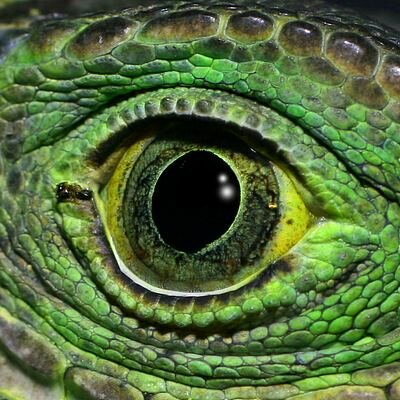
What is a Reptile?
There are over 8000 reptile species in total, they belong to the class Reptilia, and are devided into four groups or orders. 
Order Squamata 3 suborders
Order Testudians 238 species of turtles and tortoises in 12 families Order Crocodylia 22 species of crocodiles and alligators in 1 family and 3 subfamilies Order Rhynchocephalia 2 species of tuataras
Like mammals, birds, fish and amphibians, reptiles are vertebrates (animals with a backbone) They are ectotherms, meaning that they obtain their body heat from outside sources rather than producing it metabolically from their food. This ability separates them from mammals and birds, which are endothermic. Reptiles are seperated from fish and amphibians in that they lay shelled eggs or produce live young, depending on species. This means that they are not bound to water, as are most amphibians and fish. Another major difference between the two are that reptiles are covered in dry, horny scales while amphibians have a wet porous skin that needs to be kept moist.
|
|
CLICK TO ADD US TO YOUR FAVORITES
|
|
|
|
|
|
Think About It .....
Click here
|

Click the following
LINKS
Check our wish list on






Khamai Reptile Centre • PO Box 175 • HOEDSPRUIT • 1380 •

 © Copyright Khamai Reptile Centre, 2024. All Rights Reserved.
© Copyright Khamai Reptile Centre, 2024. All Rights Reserved.









